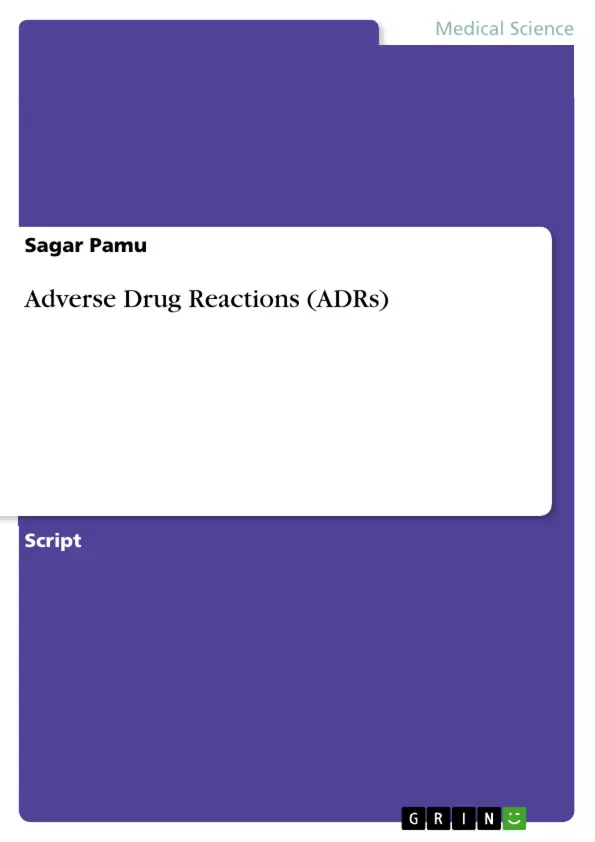The WHO defines an "Adverse Drug Reaction as any response to a drug which is noxious and unintended and which occurs or doses normally used in a man of prophylaxis diagnosis or therapy of disease or for the modification of physiologic function."
Adverse Drug Reactions (ADRs) are types of Adverse Drug Events (ADEs). Adverse Drug Events include ADRs, prescription errors, medication errors and other drug-related problems. ADEs are the negative consequences’ of drug misadventures. Henri Manasse defined drug misadventure as the iatrogenic hazard that is an inherent risk when drug therapy is indicated.
The American Society of Health-System Pharmacists (ASHP) defines significant ADRs as an unexpected, unintended, undesired, or excessive response to a drug that includes the following.
Table of Contents
- Definition
- Incidence
- Classification of Adverse Drug Reactions
- Type A: Augmented Reactions
- Type B: Bugs Reactions
- Drug Hypersensitivity
- Immunologic and Non-Immunologic Drug Reactions
- Immune Reaction, Its Mechanism, Clinical Manifestations
- Hypersensitivity Syndromes of Specific Drug
- Mechanisms
- Examples of Adverse Effects Associated with Specific Drugs
- Predisposing Factors
- ADR Monitoring
- Spontaneous Reporting
- Preventing ADRs
- Communicating
- Educating
- Documenting
- References
Objectives and Key Themes
This monograph aims to provide a comprehensive overview of Adverse Drug Reactions (ADRs), their incidence, classification, and management. It delves into the mechanisms of drug hypersensitivity, explores predisposing factors, and highlights the importance of ADR monitoring.
- Definition and classification of ADRs
- Incidence and prevalence of ADRs
- Mechanisms of drug hypersensitivity
- Importance of ADR monitoring and reporting
- Strategies for preventing and managing ADRs
Chapter Summaries
The monograph begins by defining ADRs and distinguishing them from Adverse Drug Events (ADEs). It examines the incidence of ADRs in different populations and discusses the significant economic and health burdens associated with these reactions. The classification of ADRs is then explored, focusing on Type A (augmented) and Type B (bugs) reactions, with examples of each type.
Keywords
Adverse Drug Reactions, Adverse Drug Events, Drug Hypersensitivity, Immunologic Drug Reactions, Non-Immunologic Drug Reactions, Pharmacovigilance, ADR Monitoring, Spontaneous Reporting, Incidence, Classification.
- Quote paper
- Dr. Sagar Pamu (Author), 2018, Adverse Drug Reactions (ADRs), Munich, GRIN Verlag, https://www.grin.com/document/425372



